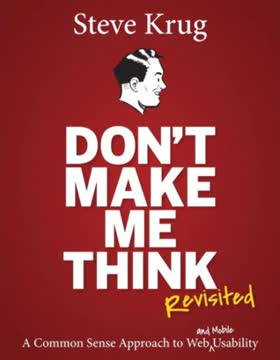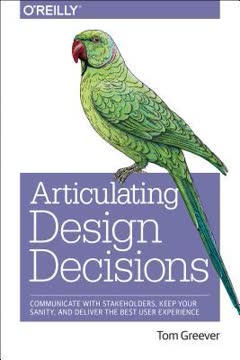نکات کلیدی
۱. خدمات همهجا حاضرند اما اغلب بهدرستی درک نمیشوند
خدمات در همهجا وجود دارند؛ از نحوهی رزرو تعطیلات گرفته تا پسانداز پول و دسترسی به مراقبتهای بهداشتی.
تعریف خدمات. خدمت بهسادگی چیزی است که به فردی کمک میکند کاری را انجام دهد. این تعریف دامنهی وسیعی از فعالیتها را دربرمیگیرد، از رزرو تعطیلات تا دریافت خدمات درمانی. خدمات در پسزمینهی زندگی ما حضور دارند، جنبههای مختلف را به هم متصل میکنند و لحظات مهم را تسهیل مینمایند. آنها رابطی هستند که از طریق آن بخش بزرگی از جهان را تجربه میکنیم.
تکامل خدمات. نحوهی دسترسی و استفاده از خدمات در طول زمان بهطور چشمگیری تغییر کرده است:
- پیش از اینترنت: خدمات معمولاً بهصورت حضوری یا از طریق مکاتبات کتبی ارائه میشدند
- اختراع خدمات پستی: امکان دسترسی از راه دور به خدمات را فراهم کرد
- عصر تلفن: امکان پرسش و شکایت در زمان واقعی را به وجود آورد
- دوران اینترنت: محصول و خدمت را ادغام کرد و مسیرهای کاربری یکپارچهای ایجاد نمود
۲. خدمات خوب با در نظر گرفتن نیازهای کاربران طراحی میشوند
خدمتی که خوب است، برای کاربر، سازمان ارائهدهنده و جامعه بهطور کلی مفید است.
طراحی کاربرمحور. خدمات خوب نیازها و اهداف کاربران را در اولویت قرار میدهند. این یعنی درک اینکه کاربران چه میخواهند به دست آورند و طراحی خدمت بهگونهای که آنها را به هدفشان بهصورت کارآمد و مؤثر برساند. پژوهش کاربری در این فرایند اهمیت فراوانی دارد، زیرا نقاط ضعف و فرصتهای بهبود را شناسایی میکند.
رویکرد جامع. یک خدمت واقعاً خوب سه جنبهی کلیدی را در نظر میگیرد:
۱. منفعت کاربر: آیا نیازهای کاربر را به شیوهای مناسب برآورده میکند؟
۲. منفعت سازمان: آیا سودآور و آسان برای اجراست؟
۳. منفعت اجتماعی: آیا تأثیر مثبتی بر جهان و جامعه دارد؟
۳. ثبات و آشنایی برای موفقیت خدمات حیاتیاند
شفاف بودن امور، باعث بهبود آنها میشود.
تعادل بین نوآوری و آشنایی. در حالی که بهبود خدمات اهمیت دارد، تغییرات ناگهانی میتواند کاربران را سردرگم کند. خدمات باید به شیوهای کار کنند که برای کاربران آشنا باشد و بر اساس تجربیات قبلی آنها شکل گرفته باشد. این به معنای عدم نوآوری نیست، بلکه به معنای معرفی دقیق و سنجیدهی ویژگیها و فرایندهای جدید است.
ثبات در تمام کانالها. خدمات خوب در تمام نقاط تماس ثبات دارند:
- رابطهای دیجیتال
- پشتیبانی تلفنی
- تعاملات حضوری
- ارتباطات کتبی
ایجاد این ثبات نیازمند همکاری و ارتباط مؤثر میان تیمها و بخشهای مختلف سازمان است.
۴. طراحی فراگیر به نفع همه کاربران است، نه فقط افراد دارای معلولیت
کاربر «عادی» وجود ندارد.
طراحی برای تنوع. طراحی فراگیر تمام گسترهی تنوع انسانی را در نظر میگیرد؛ از تواناییها، زبان، فرهنگ، جنسیت، سن و سایر تفاوتهای انسانی. با طراحی برای موارد خاص و نیازهای ویژه، خدمات معمولاً برای همه قابل استفادهتر میشوند.
انواع فراگیری که باید مد نظر قرار گیرد:
- دسترسی فیزیکی
- دسترسی شناختی
- فراگیری زبانی و فرهنگی
- فراگیری اجتماعی-اقتصادی
- دسترسی فناوری
مزایای طراحی فراگیر:
- افزایش تعداد کاربران
- بهبود رضایت کاربران
- رعایت قوانین و مقررات
- نوآوری از طریق محدودیتها
۵. خدمات باید مستقل از ساختارهای سازمانی باشند
در عصر اینترنت، خدمات مرزهای سازمانی را رعایت نمیکنند.
ساختار متمرکز بر کاربر. کاربران به ساختارهای داخلی سازمان اهمیت نمیدهند؛ آنها به رسیدن به اهدافشان اهمیت میدهند. خدمات خوب حول نیازهای کاربران طراحی میشوند، نه بخشهای سازمانی مجزا. این اغلب نیازمند همکاری میان بخشها یا حتی سازمانهای مختلف است.
شکستن دیوارهای بخشها. برای ایجاد خدمات یکپارچه:
- دادهها بهطور مناسب بین تیمها و سازمانها به اشتراک گذاشته شود
- فرایندها و سیاستها هماهنگ شوند
- زبان و اصطلاحات یکسان به کار گرفته شود
- فرهنگ همکاری و اهداف مشترک تقویت گردد
۶. خدمات مؤثر نیازمند کمترین مراحل و توضیحات روشن هستند
خدمتی خوب است که با کمترین مراحل ممکن به پایان برسد.
فرایندهای سادهشده. خدمات خوب تعداد مراحل لازم برای رسیدن کاربر به هدف را به حداقل میرسانند. این همیشه به معنای کاهش تعداد تعاملات نیست، بلکه اطمینان از این است که هر مرحله ضروری و ارزشمند برای کاربر باشد.
ارتباط شفاف. در هر مرحله از خدمت:
- توضیح داده شود چه اتفاقی میافتد و چرا
- انتظارات واضحی دربارهی مراحل بعدی تعیین شود
- زمینهی تصمیمات یا الزامات ارائه گردد
تعادل بین کارایی و کنترل کاربر. در حالی که کاهش مراحل اهمیت دارد، باید اطمینان حاصل شود که کاربران کنترل و دید کافی بر تصمیمات مهم در خدمت دارند.
۷. خدمات خوب به سرعت به تغییرات زندگی کاربران واکنش نشان میدهند
خدمتی خوب است که به تغییر شرایط کاربر بهسرعت و بهصورت تطبیقی پاسخ دهد.
پیشبینی تغییر. زندگی کاربران همواره در حال تغییر است. خدمات خوب با این واقعیت طراحی میشوند تا کاربران بتوانند بهراحتی اطلاعات خود را بهروزرسانی کنند یا استفادهشان از خدمت را با تغییر شرایط تطبیق دهند.
انواع تغییراتی که باید در نظر گرفته شوند:
- تغییرات مستقیم (مانند آدرس، شماره تلفن)
- تغییرات غیرمستقیم (مانند رویدادهای زندگی که ممکن است بر استفاده از خدمت تأثیر بگذارند)
طراحی پاسخگو. خدمات باید انعطافپذیری لازم را داشته باشند تا بدون ایجاد اختلال در تجربهی کاربری، تغییرات را بپذیرند. این ممکن است شامل موارد زیر باشد:
- گزینههای سلفسرویس آسان برای بهروزرسانیها
- ارتباط پیشگیرانه دربارهی تغییرات احتمالی
- رابطهای تطبیقی که به زمینهی کاربر پاسخ میدهند
۸. تشویق رفتارهای مثبت به نفع کاربران، کارکنان و جامعه است
خدمتی خوب است که رفتارهای ایمن و سازنده را در کاربران و کارکنان تشویق کند که به نفع همه باشد.
همسویی انگیزهها. خدمات باید به گونهای طراحی شوند که رفتارهایی را تشویق کنند که به نفع همه ذینفعان—کاربران، کارکنان، سازمان و جامعه—باشد. این نیازمند توجه دقیق به مواردی چون:
- مدلهای کسبوکار
- انگیزهها و شاخصهای عملکرد کارکنان
- طراحی رابط کاربری و تعاملات
پرهیز از الگوهای تاریک. باید از استفاده از تکنیکهای طراحی دستکاریکننده که به نفع سازمان و به زیان کاربران است، خودداری شود. به جای آن، باید بر ایجاد ارزش از طریق طراحی شفاف و اخلاقی تمرکز کرد.
توانمندسازی کارکنان. اطمینان حاصل شود که کارکنان خط مقدم ابزار، دانش و اختیار لازم برای ارائه خدمات عالی را دارند. این ممکن است شامل موارد زیر باشد:
- حذف دستورالعملهای خشک یا سیاستهای غیرقابل انعطاف
- ارائه آموزشهای جامع
- دادن اختیار تصمیمگیری به کارکنان در راستای منافع کاربران
۹. شفافیت در تصمیمگیری اعتماد و رضایت کاربران را افزایش میدهد
وقتی تصمیمی در خدمت گرفته میشود، باید برای کاربر واضح باشد که چرا این تصمیم اتخاذ شده و در همان لحظه بهروشنی اطلاع داده شود.
توضیحات روشن. وقتی خدمات تصمیماتی میگیرند که بر کاربران تأثیر میگذارد (مانند صلاحیت، قیمتگذاری، توصیهها)، دلایل پشت این تصمیمات باید بهروشنی به اطلاع کاربران برسد. این امر اعتماد را افزایش میدهد و به کاربران کمک میکند گزینههای خود را بهتر درک کنند.
شفافیت الگوریتمی. با افزایش استفاده از الگوریتمها و تصمیمگیری خودکار در خدمات:
- عوامل مؤثر در تصمیمات توضیح داده شود
- فرصتهایی برای بازبینی یا اعتراض انسانی فراهم گردد
- الگوریتمها بهطور منظم برای شناسایی تعصب یا پیامدهای ناخواسته بررسی شوند
توانمندسازی کاربران. به کاربران کنترل دادهها و نحوهی استفاده از آنها در خدمت داده شود. گزینههای واضحی برای پذیرش یا رد جمعآوری دادهها ارائه شود و مزایا و معایب این انتخابها توضیح داده شود.
آخرین بهروزرسانی::
FAQ
What's "Good Services: Decoding the Mystery of What Makes a Good Service" about?
- Focus on service design: The book by Lou Downe explores what makes a service good and how to design services that work effectively for users.
- 15 principles: It introduces 15 principles of good service design, providing a framework for creating services that are easy to find, use, and understand.
- Real-world examples: The book uses real-world examples to illustrate how services can fail and succeed, offering practical insights into service design.
- User-centered approach: It emphasizes designing services that meet user needs, are sustainable for organizations, and beneficial for society.
Why should I read "Good Services" by Lou Downe?
- Practical guidance: The book offers actionable advice for anyone involved in designing or managing services, making it a valuable resource for professionals.
- Comprehensive framework: It provides a structured approach to service design, helping readers understand and apply the principles effectively.
- Improving user experience: By focusing on user needs and expectations, the book helps readers create services that are more user-friendly and efficient.
- Broader impact: It highlights the importance of designing services that are not only good for users but also for organizations and society as a whole.
What are the key takeaways of "Good Services"?
- 15 principles of good service design: These principles serve as a guide to creating services that are easy to find, understand, and use.
- User-centered design: Emphasizes the importance of designing services that meet the needs and expectations of users.
- Consistency and integration: Highlights the need for services to be consistent across different channels and integrated across organizational boundaries.
- Adaptability and responsiveness: Stresses the importance of services being able to respond quickly to changes in user circumstances.
What are the 15 principles of good service design according to Lou Downe?
- Be easy to find: Services should be easily discoverable by users without prior knowledge.
- Clearly explain its purpose: Users should understand what the service does and how it works.
- Set user expectations: Clearly communicate what users can expect from the service.
- Enable goal completion: Help users achieve their intended outcomes seamlessly.
- Work in a familiar way: Services should align with established user expectations and patterns.
- Require no prior knowledge: Users should be able to use the service without needing prior expertise.
- Be agnostic of organizational structures: Services should not expose users to internal organizational complexities.
- Require minimal steps: Streamline the service to minimize user interactions.
- Be consistent throughout: Ensure a uniform experience across all service channels.
- Have no dead ends: Provide clear outcomes and next steps for all users.
- Be usable by everyone equally: Ensure accessibility for all users, regardless of their circumstances.
- Encourage right behaviors: Promote safe and productive behaviors from users and staff.
- Quickly respond to change: Adapt to changes in user circumstances promptly.
- Clearly explain decisions: Make decision-making processes transparent to users.
- Make it easy to get human assistance: Provide accessible human support when needed.
How does Lou Downe define a service in "Good Services"?
- Simple definition: A service is something that helps someone to do something.
- User goal-oriented: Services are defined by the user's goal, whether it's short and straightforward or long and complex.
- Continuous journey: To a user, a service is a continuous set of actions towards an end goal, regardless of who provides it.
- Historical context: The book provides a brief history of services, showing how they have evolved with technology.
What is the significance of the principle "Be easy to find" in service design?
- User accessibility: Services must be discoverable by users without prior knowledge of the task they set out to do.
- Naming importance: The name of the service should reflect what users are trying to achieve, using language they understand.
- Avoiding jargon: Services should avoid legal or technical language that users may not comprehend.
- Google as a homepage: Recognizes that users often start their search for services online, emphasizing the importance of searchability.
How does "Good Services" address the issue of consistency in service design?
- Uniform experience: Services should look and feel like one service throughout, regardless of the delivery channel.
- Avoiding weak links: Inconsistencies can create weak links in the service chain, leading to user frustration.
- Minimum viable service: Focus on creating a consistent service experience rather than isolated product features.
- Empowering staff: Ensure staff are empowered to make decisions that maintain consistency across the service.
What does Lou Downe mean by "A good service should have no dead ends"?
- Clear outcomes: Every user should be directed to a clear outcome, even if they are not eligible for the service.
- Avoiding user frustration: Services should not leave users stranded without knowing how to continue.
- Multiple pathways: Design services with multiple pathways to accommodate different user scenarios.
- Continuous journey: Ensure that users can always find a way forward, regardless of their circumstances.
How does "Good Services" suggest services should respond to change?
- Adaptability: Services should quickly adapt to changes in a user's circumstances.
- Consistent updates: Ensure that changes are reflected consistently throughout the service.
- User control: Allow users to update their information easily and understand the impact of those changes.
- Proactive design: Anticipate common changes and design services to accommodate them seamlessly.
What role does human assistance play in "Good Services"?
- Complex decision-making: Human assistance is crucial for complex or high-risk situations where automated systems may fall short.
- Empowered staff: Staff should be empowered to make decisions and provide personalized support.
- Accessibility: Ensure that users can easily access human assistance when needed.
- Balancing automation: Find the right balance between automated and human support to meet user needs effectively.
What are some of the best quotes from "Good Services" and what do they mean?
- "Good services are designed": Emphasizes the importance of intentional design in creating effective services.
- "Google is the homepage for your service": Highlights the importance of online discoverability for modern services.
- "Make things open: it makes things better": Advocates for transparency and openness in service design to improve user experience.
- "A good service is good for everyone": Stresses the need for services to benefit users, staff, organizations, and society as a whole.
How does "Good Services" address the importance of user-centered design?
- User needs focus: The book emphasizes designing services that meet the needs and expectations of users.
- Understanding user goals: Services should be designed around what users are trying to achieve, not just organizational capabilities.
- Inclusive design: Ensure services are accessible and usable by everyone, regardless of their circumstances.
- Continuous improvement: Encourage ongoing evaluation and adaptation of services to better serve users over time.
نقد و بررسی
کتاب «خدمات خوب» عمدتاً با نقدهای مثبت مواجه شده و بهخاطر اصول عمیق و قابلتأمل خود در زمینه طراحی خدمات مورد تحسین قرار گرفته است. خوانندگان از زبان ساده و روان کتاب، مثالهای واقعی و توصیههای کاربردی آن استقبال میکنند. بسیاری این اثر را منبعی ارزشمند برای تازهکاران و حرفهایهای حوزه طراحی خدمات میدانند. با این حال، برخی از خوانندگان به صفحهآرایی و قالببندی کتاب انتقاد دارند و معتقدند استفاده از فونتهای پررنگ و رنگهای انتخابشده گاهی خواندن را دشوار میکند. با وجود این مشکلات طراحی، بیشتر نقدها این کتاب را بهعنوان راهنمایی ضروری برای درک و بهبود طراحی خدمات توصیه میکنند.
Similar Books














